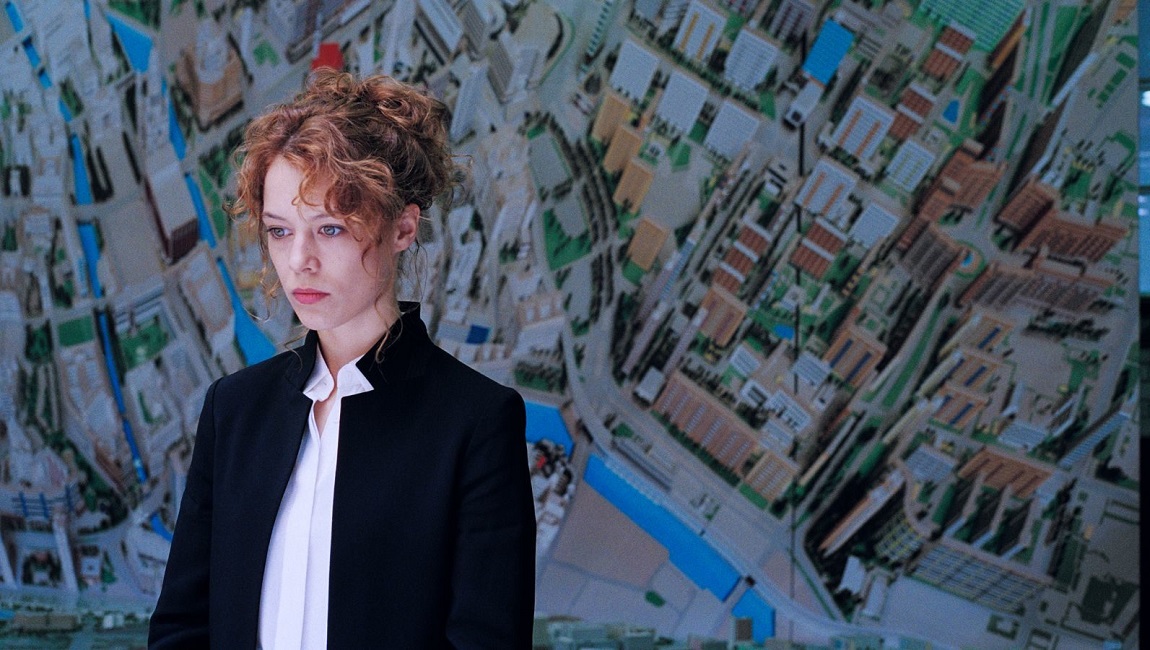Critic Alex Fields has called Joost Rekveld’s films “glimpses into secret patterns that underlie our physical reality.” While abstracted images engineered from analog computers are indeed a large part of Rekveld’s newest project, Mechanisms Common to Disparate Phenomena: #59, there’s also an underlying component that is very political and still very relevant. While in some ways #59 feels like a transmission from another universe — a bifurcated diptych that functions as a kind of mathematical equation extrapolated into various color fields and geometric anomalies — it is also a reminder that weaponized technology is still a pressing concern.
#59 begins with a 20-minute prologue detailing the accidental discovery of chaos theory. A disembodied voice narrates a text comprised of various papers written by Yoshisuke Ueda, who first proffered the theory in the early 1960s after discovering unpredictable variations in the computer programs he was running experiments on (the phrase ‘’steady states of a non-linear system” comes up several times). Accompanying the voiceover narration are images of a mechanical device equipped with a colored pencil that draws seemingly random lines on graph paper. It’s a fascinating, if dense, opening sequence; there’s too much information to relay in a brief synopsis, but it sets the stage for what follows. Systems forming and breaking apart via unpredictable algorithms is a heady subject, but the images being created by the mechanical apparatus have a hypnotic quality — some appear to be curved, even organic shapes, while others become a hash of scribbles and overlapping, jagged edges. It’s hard to discern a rhyme or reason, which is certainly part of the point.
After the prologue ends, the film segues into section two, this one roughly an hour long. A series of oscillating lines undulate through pastel color fields while the soundtrack plays snippets of dialogue and sound effects from 1950s sci-fi movies. It’s not unlike an EKG monitor or a sonar device, except that the patterns are much more dense, an intricate mesh of geometric planes spiraling from various focal points. The soundtrack creates an interesting counterpoint, with talk of spaceships and countdowns and alien invaders. Fittingly, Rekveld himself does not refer to his images as “shots,” as they are not the result of any sort of traditional photochemical process. Instead, he refers to them as ‘signals’, the byproduct of wavefoms produced via modules, sonar equipment, flight simulators, and homemade analog computers from the ’60s and ’70s (Rekveld lists the equipment that produced the “signals” in #59’s end credits). It’s all very mesmerizing, the gentle undulations inducing a kind of fugue state of hypnotic stasis.
Beyond mere abstraction, there is of course an entire history of militarization and the legacy of the Cold War embedded both in these specific technologies and many of the ’50s B-films that Rekveld samples for his soundscape. In his own words, Rekveld wishes his film to “liberate these technologies from their problematic origins.” It’s a noble gesture, especially as, in what must be some kind of cosmic coincidence, America and China are currently engaged in a new Space Race to the moon (anti-communist boogeymen are still an easy scapegoat for unimaginative politicians, even though this new quest to claim the lunar surface is largely outsourced to the private sector — nuclear angst has given way to neo-liberal pragmatism). There is a warmth to Rekveld’s “signals” that feels very different from, say, generative A.I. or the zeroes and ones of modern CGI effects. Splitting the difference between mechanical processes and something more old-fashioned, Rekveld has crafted something truly rare: a film constructed almost entirely out of equations and computers that still feels personal and hand-crafted.







